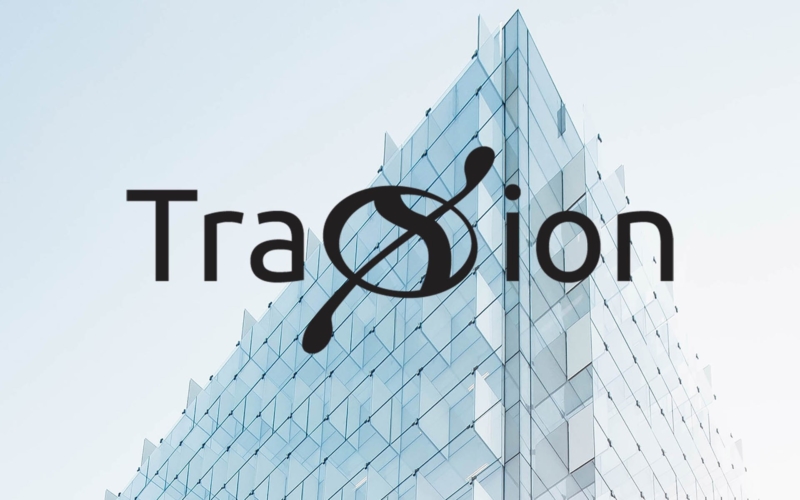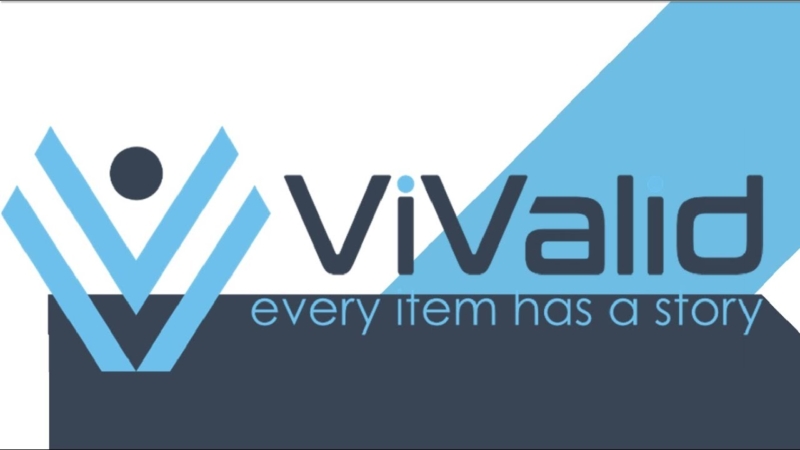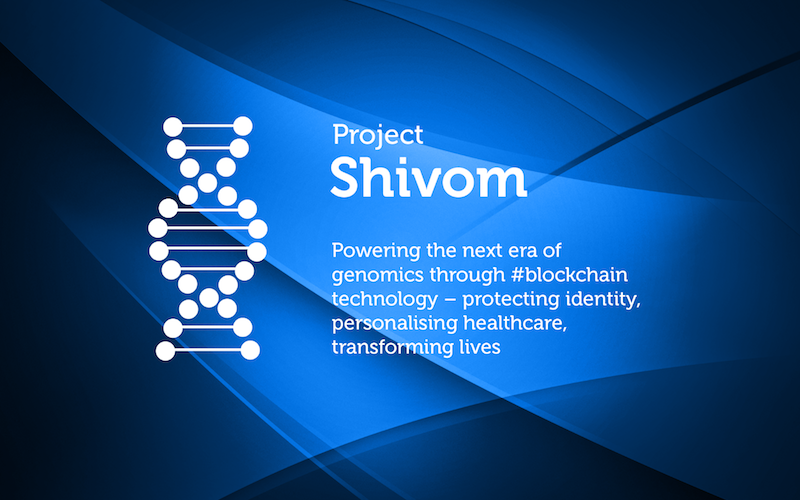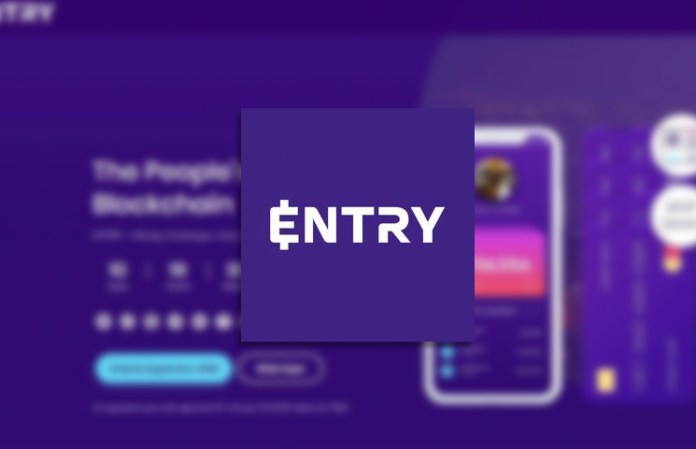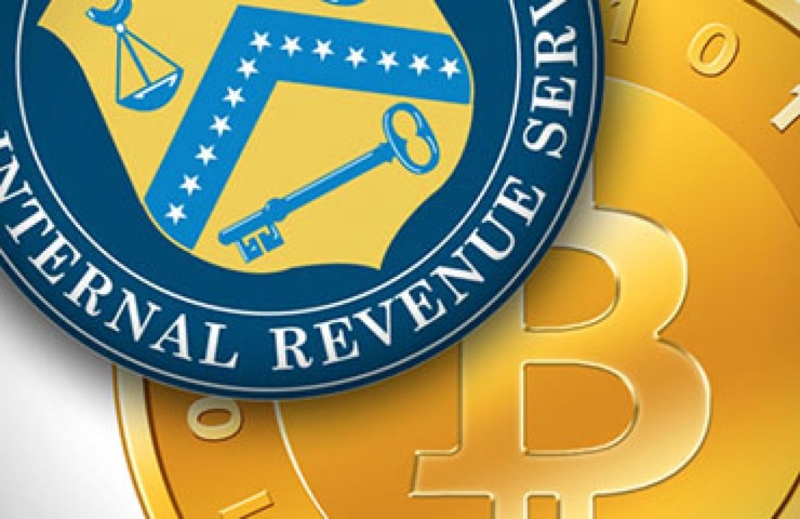£0.00
April 25, 2018
Traxion Tech Review
Ten years after the financial crash of 2008, and we are still facilitating the same financial system that led to the crash – and the crashes before it.
But now financial experts have predicted that the banking system as we know it will not be around in 10-15 years.
The emergence of blockchain technology has made it all too apparent that change is on the way.
The banks, with their current legacy systems, will either have to adapt or give way to the rapidly growing crypto-economy.
At least that’s what some believe.
Many ICO projects are aiming to help make the transition from the current economic system based on fiat money to a new economic system based on digital currency.
So what could the future economy look like? The team behind TraXion seem to have the answer.

What is TraXion?
The team behind the project recognise the potential of blockchain technology to decentralise a number of services, including banking.
Traxion is an ecosystem that consists of three components: TraxionWallet, TraxionChain, and TraxionContract. Each will form part of what the team calls a user’s digital financial infrastructure.
The first one is TraxionWallet, which will function like your current banking app, except that it can do much more. Not only will you be able to transfer money with it, but it will be like going down to the actual bank. You can use it to lend and borrow as well.
Business users will be able to take advantage of the TractionChain, which is an inter-business blockchain for tracking their results. This way, business professionals will be provided with another tool for measuring their commercial progress.
Finally, TraxionContract is the component that applies smart contract technology to ensure safety and reduce corruption. Similar to many other ICOs who make use of smart contracts, TraxionContract will put control in the hands of professionals.
TraXion will be using the latest IBM Hyperledger Fabric technology to create what they call a “permission-based distributed ledger.”

What is the aim?
There are three key aims of the TreaXion project that interested parties should be aware of.
The first one is to ensure that merchants and customers can send and receive payments seamlessly. This will solve the issues of customers not being able to make a payment unless they know the merchants bank account details. With TraXion, they can simply scan a QR code and make a mobile payment.
The second aim is to end poverty. This may sound like a very ambitious aim, but the team is aware that ending poverty requires a holistic solution. However, they point out, blockchain may be part of that solution. By creating an affordable financial platform, TraXion aims to put developing countries on an equal footing with the OECD.
The third aim is to make aid transparent. The team highlights how charities will be able to benefit from smart contracts in order to reduce corruption. But not only charities will be able to make use of this technology. Any donation make to anyone will be able to be verified for extra security by the use of smart contracts.
bitcointalk username: Ico Friends
bitcointalk profile link
April 24, 2018
Howdoo Review
Social media platforms like Facebook, which has over 2 billion users worldwide, are raking in a lot of money in advertisements for other companies.
It seems like a good deal for everyone involved.
Users have a social media platform where they can connect with their friends and family for free. Advertisers have access to their target audience and can spend their ad budgets more wisely. Facebook facilitates these advertisements and takes a slice of the pie.
But what there was an even better deal? What if you, as a social media user, not only could decide how many advertisements you are exposed to, but also get paid for it?
Howdoo μDoo is an ICO that will attempt to make social media a better deal for users, and reward them for engaging with the platform.

What is Howdoo μDoo exactly?
In the face of it, Howdoo μDoo could be considered just another social media platform on which users can message each other, share photos, leave comments, and so on.
And it does have all those capabilities. It is a place where content creators, merchants, artists, news media, and other groups can connect with each other.
However, the platform is built on the blockchain. And, like many other ICOs, the platform is using the popular Ethereum blockchain.
There are also some other key differences between Howdoo μDoo and other social media platforms.
The platform will put users in control of their digital footprint, so they know what their data is being used for and by whom.
Users will also be able to choose how many adverts they see, and from whom. More importantly, they will receive compensation for the ads they see.
Rather than having one company police content on the platform, Howdoo μDoo aims to put the user community in charge of regulating anti-social content.

How does it work?
As a Howdoo μDoo user, you will be in complete control of the advertisements you are exposed to. You can select maximum ads for maximum revenue, or no ads for no revenue.
As a content creator, you are in an even better position to earn money. By uploading content, you will receive compensation proportionate to how popular and shared your content is.
As an advertiser, you will have much more control over where your advertisements are displayed, and to whom.
The currency being used on the platform to facilitate all the transactions between users, content creators and advertisers will be the µDoo token.
Who is the team behind it?
Howdoo μDoo was founded last year by David Brierley, who has worked as a Director of Business Analytics at SAP, as well as being Senior Vice President of Pyramid Analytics.
In addition to Brierly, who is also Chief Initiator, Neil Harper is the Chief Storyteller, Nakul Shah heads Research & Development, Mark Perring is Chief Engagement Officer, James Farlow works as a Senior Technical Architect, Tony Loan heads the Invention department, and Beth Lawton works in Development.
What do you think about the concept of getting paid to engage with ads on social media, and being able to choose how much and when? Leave your comments below!
My ETH adress:
0xcD3347Bd7595750473b2dC8d2F32f28a32C868b7
bitcointalk username: Ico Friends
April 22, 2018
ViValid Review
Ever found something in your basement or on your loft and wondered if it is worth anything? Maybe it is useless, and not worth holding on to. But maybe it is more valuable than you can imagine. How do you find out? You could, of course, spend hours and hours scouring the Internet for information. Another option to ask an expert for their opinion. Maybe you will even ask two experts, just to be sure. But what if they give you two different estimates? And how do you know their estimates are correct? It would be a shame to sell your new-found treasure for less than it is worth. This is where ViValid enters the picture.
What is ViValid?
ViValid is perhaps best described as an online community of experts. Experts in jewellery, baseball cards, antique furniture, stamps. coins, you name it. For every category of items of value there is an expert who knows how much they are worth. As the happy owner of such an item, all you have to do is to take a picture of it, upload it to the platform, and await the evaluation. ViValid randomly assigns multiple experts in the relevant field to evaluate your item, and you will receive this at a fraction of the cost it would normally have come out to. Thus, you save yourself the headache of having to research the item yourself, have several reliable opinions on how much you can sell your item for.

How does it work?
ViValid is a platform fuelled by blockchain technology, and thus works on a decentralized ledger where all the data is stored. This means that you as the owner of an item can remain anonymous, and so can the experts.
However, ViValid does not expect you to simply trust the fact that the experts are, in fact, experts. They have ensured that each expert has undergone several tests to determine their level of expertise. The experts are then categorized into five tiers. Each tier represents a higher level of expertise, and thus provides a more accurate estimation of your items value. This, however, also means that an expert in a higher tier warrants a higher remuneration for their work.
Finally, the history of ownership for each item will also be recorded on the blockchain, which means that users can also refer to this history to determine the value of an item. As many collectibles increase in value over time, this is a very useful feature of the ViValid platform.

How do the tokens work?
The ViV tokens are the native currency of ViValid, and are used by the owners of items to pay the experts of their evaluation of them.
What is proof of validation?
The Proof of Validation is a system that works on the platform to ensure that both the jobs carried out by the experts and the actual evaluation of the items is being validated. By using the blockchain technology, the decentralized nature of the platform ensures maximum validity. The ViValid website also contains information about how this works in greater detail.
bitcointalk username: Ico Friends
My ETH adress:
0xcD3347Bd7595750473b2dC8d2F32f28a32C868b7
April 22, 2018
There was a time when children would read comic books.There was a time when children would save up spare change in their piggy banks.
Both are things of the past now, it would seem. The comic books have been switched out with iPads, and the piggy banks have now also been digitized.
Cryptos for kids?
Pigzbe is an app that works like a digital piggy bank, and is now available for children over the age of six years old.
The brain behind the app belongs to Filippo Yacob, and the aim of the project is very much the same as the old fashioned physical piggy bank: teaching kids about money.
As with other cryptocurrencies, Pigzbe works with tokens that children can store in their digital “piggy wallet”.
The tokens, based on blockchain technology, are called Wollo and can be purchased by adults as well – if they invest in the official ICO.
Wollo is the first cryptocurrency targeting children specifically, and the reactions to this invention have so far been mixed.
Some parental groups have pointed out that it is not an appropriate way to teach children about money, whilst cryptocurrency enthusiasts have noted that it is no different from an actual piggy bank.

Family-friendly ICO
Given that Pigzbe and Wollo are part of an official ICO, it means that it is of course also available for adults.
The family-friendly piggy wallet can be used by parents to reward their children for good behavior, or for doing household chores.
The tiny transactions are usually around one to three cents, so in essence the same as would go into a physical piggy bank.
Furthermore, the advantage Pigzbe has over other piggy bank apps, is that it does not charge the same transaction fees.
The founder of Pigzbe highlights the importance of teaching children about finances early on, to prepare them for adulthood later on.
The project was inspired by being unable to find a suitable piggy bank app for his own son, which would allow for tiny transactions.

How does it work?
As opposed to other apps, the Pigzbe app for children is more complex and immersive than the adult version, which has a simpler interface.
The aim of the app is to encourage giving small amounts as gifts, as well as to turn saving money into a fun and engaging game.
The children’s version of the app will include a pink controller that allows them to receive notifications from their parents and other relatives.
The parents, meanwhile, will have access to a black controller with which they can store the Wollo tokens offline.
The app also comes with a Wollo Card, which is a digital debit card that can be used in both online and offline stores to redeem the tokens for products and services.
As with any other online activity, Pigzbe comes with parental controls that allow them to restrict access to adult content.
Finally, the Pigzbe app allows for more transparency. Parents are now in full control of how much money their children have and what it is being spent on.
What do you think about cryptocurrencies for kids? Leave your comments below!
April 20, 2018
In the last 48 hours, Bitcoin has seen an incredible rise in value of over $500.
Not is this great news for investors in Bitcoin, but the good fortune seems to have rubbed off on other cryptocurrencies as well.
Ethereum, Ripple and Bitcoin Cash have all, perhaps as a result of the halo effect, risen in value by 10-20% as well.
Since the crash in late December 2017, and the subsequent terrible first quarter of 2018, Bitcoin has made a remarkable come-back.

Bitcoin buckles the negative trend
Last week, the pioneering cryptocurrency broke the negative trend by increasing its value by over a grand in less than an hour.
Bitcoin is the most valuable cryptocurrency in the world, and it looks like it is bent on maintaining that spot on the crypto-throne.
Although far from its peak of over $19,000 back in December, the Bitcoin now has a healthy value of almost $9,000.
And yet this latest increase in value seems like a small fluctuation when compared to other cryptocurrencies like Ethereum and Ripple.
Ethereum has increased 10% in value in just 24 hours, and Ripple a staggering 19% in the same time.
This difference in fluctuation could be that Bitcoin is more established as a cryptocurrency, compared to Ethereum and Ripple.
Bitcoin Cash, however, has shown a similar rise to Ethereum and Ripple.
The relatively new cryptocurrency, which is also related to Bitcoin, rose by 15% in the same space of time, making it the fourth most valuable cryptocurrency in the world.
With the many good and bad news flooding the cryptocurrency market, it can be difficult to keep track of what is happening.
For now, however, it would seem that the winter is indeed over.

Why is the negative trend reversing?
There could be many reasons for this new rise in value.
Skeptics were noting that the newly imposed cryptocurrency regulations around the world would lead to the decline of cryptocurrencies.
Other news, however, have perhaps ensured that this does not happen.
Last week, Bitcoin and other cryptocurrencies were declared halal by an Islamic scholar in Malaysia.
This means that 1.8 billion more people around the world will have access to cryptocurrencies and can participate in the global market.
The head of the International Monetary Fund (IMF) also expressed her interest in the blockchain technology that has fuelled the rise of cryptocurrencies.
Bitcoin might continue to soar to unprecedented heights
Based on these good news for the cryptocurrency market, experts have predicted that Bitcoin could rise much higher than its peak in 2017.
Some have even predicted that Bitcoin could become as valuable as a quarter million dollars in the four years.
That is indeed good news for investors in Bitcoin.
Those who were distraught by the bad start to this year will now be able to face the rest of 2018 with a more positive outlook on the future.
What do you think the future holds for Bitcoin? Have you invested and are now holding on to your cryptocurrencies in the hopes that they will continue to rise?
Leave your comments in the section below!
April 19, 2018
The future of healthcare?
Ever since the Human Genome Project, which for the first time allowed people to have their genomes sequenced, massive leaps have been made in healthcare.
Hereditary diseases of all kinds have been combated more efficiently, improving and saving the lives of countless people around the world.
Similarly, artificial intelligence has aided healthcare professionals by improving their systems and saving time as well as resources.
Genomic medicine and artificial intelligence has been revolutionary for medicine. The same could be said for the impact blockchain technology will have on the global economic system.
But could blockchain technology also be used in healthcare? Up until now, few have toyed with this idea.
Project Shivom is the ICO that will combine genomic DNA sequencing with artificial intelligence and blockchain technology to once again revolutionise the way we think about healthcare.

About Project Shivom
The main aim of Project Shivom is to make healthcare more personal, whilst protecting the identity of patients, as well as their personal data.
The team behind it claim that their platform will “allow the transition to value-based precision healthcare”.
The foundation of this ambitious project is the database: the Shivom team aims to build the world’s largest genomic and health database.
Using their platform, everyone will be able to have their genome sequenced and stored in the database.
Why would this be a good idea?
Because healthcare professionals and researchers can make use of the genomic data stored in the database to improve healthcare treatments.
In addition to contributing to this research, patients will also have access to the latest healthcare technology relevant to their specific condition.
Shivom wants an open web-marketplace, an eco-system if you will, where everyone can contribute to the advancement of medical science.
This includes governmental organisations, non-profit organisations, as well as for-profit businesses.

How does it work?
Imagine a place where patients, healthcare professionals, medical insurance companies, pharmaceutical companies, charities, scientific researchers, public institutions, and tech developers all can communicate, and trade knowledge, products and services.
A patient will have their genome sequenced, and be able to monetise their DNA data by receiving OMX tokens in return for adding it to the global database.
By using blockchain technology, the patient will not only remain anonymous, but also own their data and be in full control of what happens to it.
Researchers will then be able to access this data and use to further their scientific studies.
Pharmaceutical companies and healthcare insurance companies will be able to use these new findings to improve their products and services.
The limits for what can be achieved in healthcare research and development will be removed as the project goes global and includes people from all over the world.
Even low-income countries will be able to both contribute to the advancement of medicine, as well as benefit from it.
Have a look at the details, and check out the official video for Project Shivom on the right hand side of this page.
Let us know what you think in the comment sections below!
Other Info:
April 18, 2018
Entry Money Review
The financial crisis of 2008 sent shockwaves throughout the world, and the effects of it can still be felt to this day. People were made homeless, others lost their jobs, and mistrust in the banking system was widespread. The financial crisis gave birth to movements like Occupy Wall Street. At the same time, another movement was born: blockchain.
The emergence of cryptocurrencies threatened to destabilize the status quo by offering the people a new way of conducting financial transactions. As the technology behind cryptocurrencies has continued to gain ground, people are also getting increasingly fed up with the current banking system.
International transactions cost a lot of money and take a lot of time, without adding any benefit to the users whatsoever.
The current banking model is flawed and outdated. There is too much paperwork, bureaucracy and risk involved.
ENTRY is a project that aims to disrupt the current system by offering a better alternative.
Say hello to a faster, cheaper and safer way of making financial transactions.

About ENTRY
The ENTRY platform is based on blockchain technology and makes use of smart contracts. The aim of the platform is twofold.
First, it will act as a bank where users can store their cryptocurrency tokens, make payments and lend money out.
They will also be able to transfer both cryptocurrency tokens and fiat money internationally, as well as make use of withdrawal services like ATMs.
The second aim is to function as a cryptocurrency exchange for businesses and private persons.
The team behind ENTRY realizes that transitioning from the current financial system to a new one will not happen overnight.
That is why their mission statement is to be “the gateway between traditional and new financial paradigms and systems led by cryptocurrencies and empower the financial ecosystem to have a framework that allows for interoperability between the two.”
With that said, the aim of the ENTRY project is to eventually phase out fiat money in favor of an economy based on cryptocurrencies.

How does it work?
The general idea is to allow consumers to purchase goods and services online for cryptocurrencies, and the merchants to be paid in fiat money.
The online exchange will allow merchants to do conversions on the platform.
This will ensure they get the right price (minus the transaction fee) and avoid fluctuation and differentiation.
The only fiat currency that will be available in the beginning will be EUR, as the ENTRY project will target the Eurozone first.
The plan is to eventually expand to the global market and cover all fiat currencies.
What do you think?
For cryptocurrency enthusiasts, Entry sounds like a dream come true – maximum financial freedom and flexibility.
For online merchants, this project could also open up a whole new market of customers paying for goods and services with digital currencies.
Does Entry have the potential to revolutionize the way we do banking? Have you already invested in tokens?
Leave your comments below and let us know what you think about the Entry project!
bitcointalk username: Ico Friends
April 17, 2018
Alibaba is perhaps best known for being the largest e-commerce marketplace in the world.
The platform is mainly geared towards the bulk sale of items of all kinds.
Many European businesses import goods from China by liaising directly with the manufacturers via Alibaba’s platform.
For smaller Chinese businesses or individuals, there is Taobao.
Set up in 2003, Taobao is owned by Alibaba, but functions more like a Chinese version of eBay.
Banning the sale of items related to cryptocurrencies is not a new phenomenon on Taobao.
Previously, sellers of tutorials on how to mine cryptocurrencies have had their items taken off the platform.
Now, however, Taobao is expanding its ruleset.
Anything remotely related to cryptocurrencies, ICOs, and blockchain will now be banned from the platform.
This also includes services like consultancies, ghostwriting, and technical services.

Bans are nothing new in China
For those who have been following the developments in China, this should come as no surprise.
ICOs and cryptocurrencies have not received a warm welcome.
The People’s Bank of China decided to ban all ICOs last year, and now they have banned cryptocurrencies altogether.
There is no ban on cryptocurrency mining yet, but given the current bans in place, it cannot be far away.
It is therefore understandable that Taobao has decided to penalize their users if they try to sell anything related to ICOs and cryptocurrencies.
If Taobao allowed their users to circumvent the bans issued by the People’s Bank of China, the whole platform would be at risk of being shut down.
Despite these bans, which could easily spell the end of the Chinese cryptocurrency community, many are optimistic.
Good news on the horizon
The People’s Bank of China recently had a change of leadership, and the new head of the bank has a very different view of the digital currencies.
According to Yi Gang, cryptocurrencies like Bitcoin provides the users with an unprecedented amount of freedom.
This stance could indicate that there is a good chance the People’s Bank of China will eventually revoke the bans.
Another factor that could give crypto-fans reason to be optimistic about the future is the Chinese government’s stance on blockchain technology.
Cryptocurrencies and ICOs have been banned, but blockchain has not.
That is because the Chinese government is very fond of the technology, and invested $1 billion in startup companies using blockchain.
Furthermore, the People’s Bank of China has the record for most blockchain related patents.
It, therefore, seems a bit counter-intuitive that the People’s Bank of China would issue the bans on ICOs and cryptocurrencies.
Why the mixed messages?
One of the reasons why could, of course, be that the Chinese government and the People’s Bank of China want full control over what the technology is being used for.
By limiting blockchain technology to the companies funded by the government startup fund, they will have that control.
What do you think about the new bans issued by the People’s Bank of China? And what about the Chinese government’s interest in blockchain?
Leave your opinions in the comment section!
April 15, 2018
One of the reasons given for the sudden surge in Bitcoin value, which only happened recently, was that many American investors were selling their coins ahead of tax collection.
Whilst this may or may not have been the reason, the IRS (Internal Revenue Service) has now released data on exactly how many people have reported capital gains from their cryptocurrency investments.
The results are far from compelling – not even 1% of the traders dealing in cryptocurrencies have reported any of their activity yet.
With the deadline for tax filing fast approaching, the IRS questions the current state of affairs.

Few have reported capital gains from cryptocurrencies
The IRS has suggested that fewer than 100 individuals have reported any capital gains or losses on their cryptocurrency investments by April 13th.
Since there are a quarter million people thought to be involved in cryptocurrency trading, that comes out to less than 0.04%.
This is seen as somewhat suspicious, seeing as 2017 was a very good year for some – and very bad for others.
Regardless of what happened with the investments, the IRS expected quite a few reports on it.
That, however, did not happen.
Complexity could be the reason
One of the reasons for this could be the uncertainty surrounding how exactly to report such gains or losses.
A representative of Credit Karma, Jagjit Chawla, opines:
“There is a very good probability that the perceived complexities of reporting cryptocurrency gains are pushing filers to hold out till the quite past minute.”
However, the reporting of cryptocurrencies like Bitcoin should be nothing new to US investors.
The IRS has been providing guidance on how to report transactions for the past four years.
The fact that Bitcoin has been around, and presumably traded in, since 2008 should also be a cause for suspicion.
The IRS considers cryptocurrencies to be assets, which means that they are to be treated like any other physical property.
In this sense, cryptocurrencies are treated in the exact same way as making a profit from buying and selling houses or land.
Regardless of whether one is trading or mining cryptocurrencies, tax applies.
Nothing new under the sun
Despite the worryingly low figures, the IRS is used to this lack of activity.
The current figures are actually not very odd, considering that only 802 people filed any capital gains or losses back in 2015.
That said, the 2017 tax year saw a huge increase in cryptocurrency trading compared to the preceding years.
This has raised some suspicion and led some people to believe that cryptocurrency traders are underreporting on their activities.
The IRS, however, remains calm.
Although the deadline is approaching with increasing speed, there is still time for the cryptocurrency traders to file their capital gains and losses.
What do you think the reason for the late filing is? Are you a cryptocurrency trader? If so, why (or why not) would you wait with filing your gains and losses? Are the tax laws too complex?
Leave your comments below!
April 14, 2018
Qompass Review
Qompass is an ambitious project with an even more ambitious vision: to revolutionize how the financial markets operate.
What is Qompass?
Qompass is a system that aims to provide users with a new way of accessing financial markets. Qompass comprises of three things: it’s a blockchain platform, it’s a mobile app, and it’s a debit card. It’s the Kinder Surprise of ICOs. The platform will be using Qompass tokens (called QPS), and the mobile app will function as a digital wallet, with which users can load credit onto their cards. The aim of the Qompass is to eliminate corruption on the global financial market by transforming it with blockchain technology.

Who is behind it?
The CEO of Qompass is Emmanuel Lim, who has over three decades of experience in data encryption and cryptography. Educated in Computer Science at Singapore Institute of Technology, his past experience includes working for Standard Chartered Bank as a head of their cybersecurity. Along with CTO Vladimir Okhrimenko and CFO Selena Neskovic, he founded Qompass in Hong Kong last year.
How does it work?
By using a combination of active leverage, artificial intelligence, and neural networks, Qompass aims to create an ecosystem of applications and protocols. In other words, the system will contain a number of services and products that will benefit users interacting with financial markets. As with other kinds of cryptocurrencies, Qompass is completely decentralized and protects the anonymity of its users. One of the added benefits is that the Qompass system will function much faster than current ones like Bitcoin and Ethereum. As a matter of fact, the developers promise that it will be able to process 30,000 transactions every second. One of the ways it will do this is by harnessing artificial intelligence. This will, in turn, lower the cost of usage, which will translate into lower transaction costs for its users. While the platform is built with financial transactions in mind, it is also designed with user customizability in mind.

What are the services and products?
Qompass promises quite a few interesting products and services for its users. The Qompass Trader uses artificial intelligence to analyze movements in the financial markets, and then provide the user with recommendations on what to trade when for maximum profit. The Open API Platform allows for financial institutions around the world to link up with the platform. The Crypto P2P Exchange is a peer-to-peer exchange that will allow users to cash out their QPS earnings through the financial institutions linked to the platform. The Blockchain-Based Financing will allow users to put down their QPS as guarantees on loans in other cryptocurrencies like Bitcoin. Finally, the Crypto Payment Cards will be the “debit card” that allows users to access the blockchain.
How much can you invest?
Qompass offers investors packages in three different tiers, that each come with different benefits. The Alpha Package (the smallest one) can be bought for just $1, and gives users the opportunity to double their investment each month, whilst paying a quarter of their earnings back into the platform. For those investing $10,001 or more, the Delta Package will allow for 200% return on investment each month, whilst only requiring 20% of the earnings to be paid in fees. Finally, the Omega Package ($100,001 and more) will give investors up to 300% back on their investment each month, and only requires 15% in performance fees.
bitcointalk username: Ico Friends

